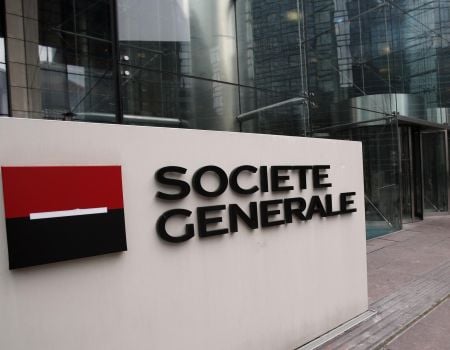Since last year, central banks have embarked on a cycle of monetary tightening, raising interest rates to counter high inflation. In Europe, the ECB has already increased the cost of money by 3%, bringing the rate on main refinancing operations to 3%, that on marginal refinancing operations to 3.25% and that on deposits with the central bank to 2%. 5%.
The new scenario characterized by higher interest rates has interest in the bond market has returned, returning from a disastrous year. Indeed, in 2022, global bond indices suffered double-digit losses, recording a second consecutive year of declines. The rise in yields, however, has changed the cards on the table. After years of negative interest rates, or in any case very low ones, bonds are now back to offering attractive yields even over not excessively long time horizons, better protecting investors from possible falls in bond prices.
In that context, Societe Generale has issued a mixed rate bond (ISIN code XS2558195694), a ten-year bond denominated in euro, listed on the EuroMOT and with a nominal value of 1,000 euro.
The salient features of the bond
The main peculiarity of this product is the mixed rate. Each year, for the first two years, the bond pays one fixed gross coupon equal to 10% of the nominal valuewhile from the third year he pays a variable coupon, equal to three times the spread between the EUR CMS 30-year swap rates and the EUR CMS 5-year swap ratewith a minimum amount equal to zero.
The swap interest rate in euro for the thirty-year maturity (EUR CMS 30 years) is one of the main market indicators, commonly used by operators to evaluate the levels of the cost of money in the long term, while the swap rate in euro for the five-year period (EUR CMS 5 years) is a benchmark for the medium term. It should be emphasized that in the last 20 years the value equal to three times this differential has been attested on average to a positive value of 2.71%with a peak of 5.4% and a minimum of -2.62%.
On the maturity date (February 22, 2033), each bond pays, in addition to the last annual variable coupon, a gross redemption amount equal to 100% of the nominal value.
Examples of performance scenarios
Let’s try to examine the yield of the bond in some distinct theoretical scenariosassuming in any case to keep the investment until maturity.
In a unfavorable picture, in which the spread between long and medium-term rates remains negative on the observation dates between the third and tenth year, the bond pays only the two fixed coupons of 10% in the first two years, while the subsequent coupons are equal to zero . Assuming an investment of 1,000 euros, a gross coupon of 100 euros is paid in the first two years and the gross amount of 1,000 euros is repaid at maturity. In this case, the gross annualized return on investment is 2.17% per annum.
In one intermediate scenario, in which the floating rate (equal to three times the difference between the 30 and 5 year rates) remains stable at 2% in the third to tenth years, the bond pays the fixed coupon of 100 euro for the first two years and thereafter a 20 euro coupon for each year from the third to the tenth. At maturity, the capital of 1,000 euros is repaid, for a gross annualized return of 3.85%.
Finally, let’s look at afavorable hypothesis in which the floating rate increases by 50 basis points per year, going from 2% in the third year to 5.5% at maturity. In this case, in addition to the two fixed coupons of 100 euros each in the first two years, an amount of 20 euros is paid in the third year, 25 in the second and so on up to 55 in the tenth year. At maturity, the gross amount of 1,000 euros is repaid e the gross annualized return thus reaches 5.16%. We recall that the potential return is gross of the tax effect (26%).
Strengths and risks
The main benefits of this product lie primarily in the full capital protection, as the bond gives the right to a repayment amount at maturity equal to 100% of the nominal value. Furthermore, the fixed rate of 10% is particularly high and guarantees a substantial cash flow in the first two years of the instrument’s life, with the aim that a normalization of central bank monetary policies within the next 3 years can recreate a positive term structure between medium and long-term rates.
The financial solidity of the Société Générale guarantor, to which they were assigned, should also be underlined rating Investment Grade da parte di S&P, Moody’s e Fitch. In particular, the three agencies assigned ratings of A, A1 and A respectively, confirming a remote insolvency risk.
Another strong point concerns the intraday liquidity. Société Générale, in its capacity as the entity responsible for managing the secondary market for bonds on EuroMOT, provides intraday purchase and sale prices for bonds starting from the relevant date of admission to trading.
The main risks are the usual ones for an instrument of this type. First, the full principal protection is only valid if the bond is held to maturity. There is therefore a risk of potential loss by exiting your investment early. Finally, it should be remembered that the bond does not protect against possible increases in inflation.
